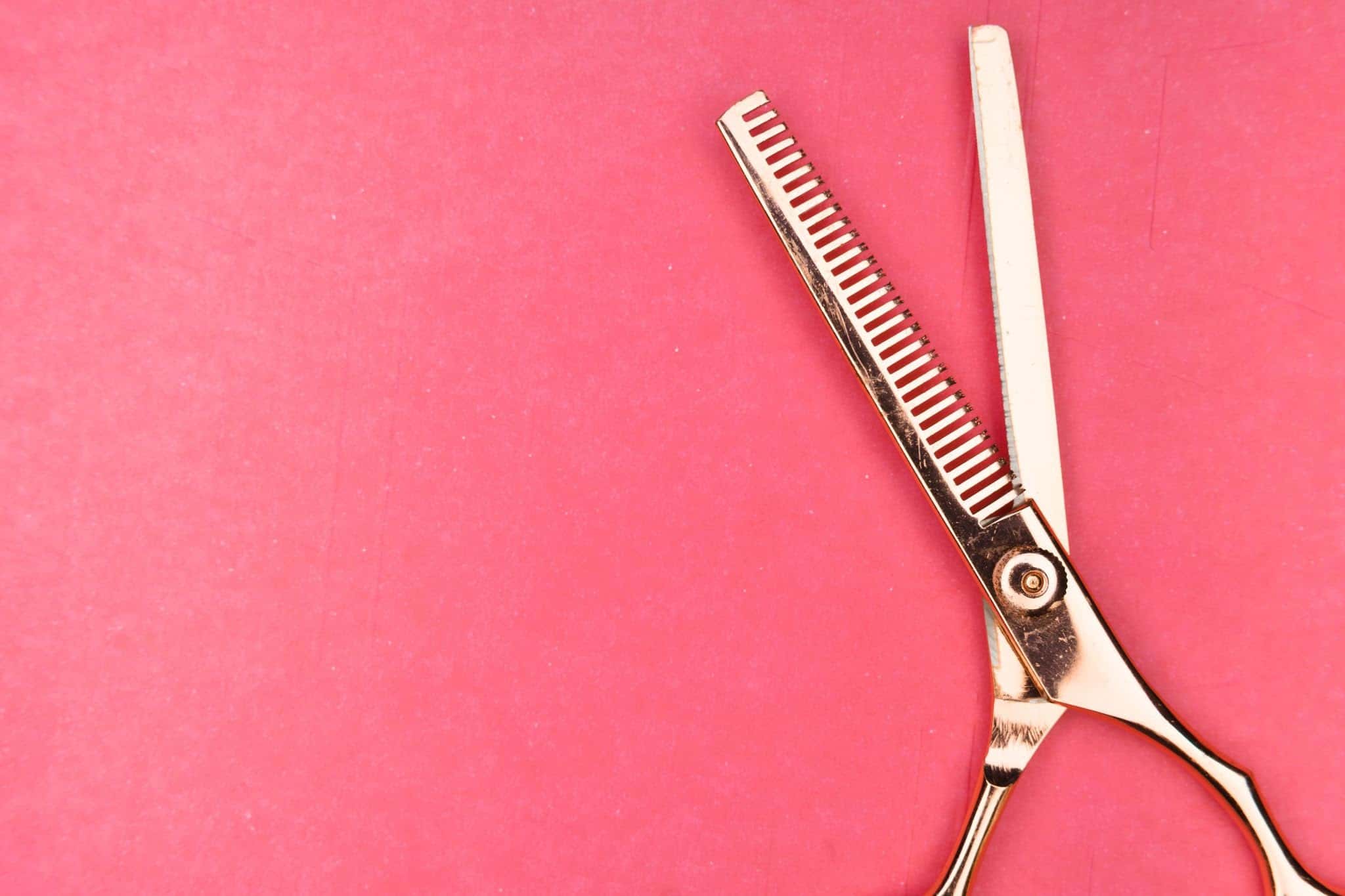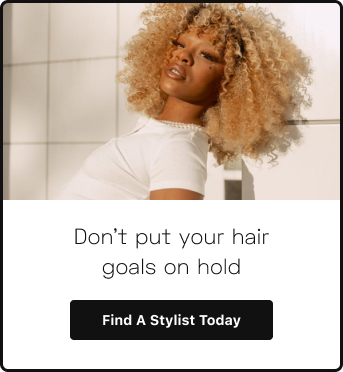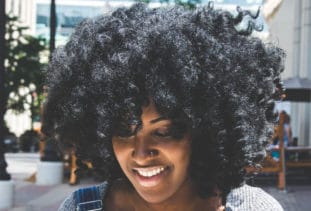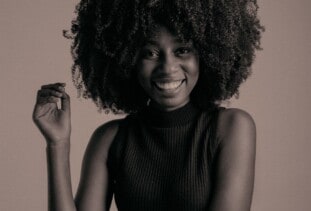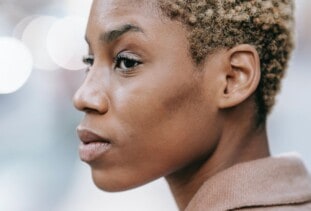Getting back to your natural hair can seem like an impossible transition, especially if you have had relaxed hair for longer than a year. Fortunately, when it comes to your hair, nothing is impossible for the pros at StyleSeat!
Whether you are using this article as a resource for transitioning to natural hair without doing a big chop on your own or while working with your local StyleSeat professional, this explanation of how to transition back to natural hair without cutting it will help you understand the basics of what to expect front he process of going “au-naturale.”
Going natural is definitely something you can do on your own, but employing the help of a professional hairstylist is definitely recommended, especially if you find yourself confused over how to go natural without cutting your hair. You can easily book a beauty appointment online to get started with a knowledgeable stylist. Not only will a hairstylist be able to coach you through the process of going natural, but they will also be able to help you shape and style throughout the natural hair journey. There is a myth going around that you have to “suffer through” the awkward phases with transitioning hair, but with a StyleSeat professional in your corner, you can look amazing the whole time you’re literally getting back to your roots.
Get back to the glory of your natural hair with StyleSeat’s top five dos for going natural without the big chop.
Stop Using Chemicals
Chances are you got to your current state of hair texture with the help of some kind of chemical treatment or hair products. While we hope that you had your hair professionally treated by a StyleSeat Pro, we also know lockdown forced many people to take matters into their own hands.
Even if you didn’t get your hair professionally relaxed by a StyleSeat Pro, making an appointment with a hairstylist in your area is a great first step when making the transition back to natural hair… especially if you are trying to avoid cutting it!
A StyleSeat professional can assess the current state of your hair and make suggestions, offer natural hair care tips, implement styling changes, and even provide multiple treatments to help your hair come back luscious and strong with the natural texture and luster you remember.
Here are the two most common types of chemical treatments used on curly hair that you will need to stop using:
Relaxers: There are two varieties of relaxers— lye and non-lye. Stop using both. There is no “transitioning-out” of using a relaxer. This is something you will need to stop cold turkey. Some of this is going to get awkward, but you got this. Remember that if you truly want to go natural, slipping up and using a relaxer will only set you back to square one. Stay strong, be confident in each curl.
Dyes: Say goodbye to touch-ups and hello to some color you’re not necessarily used to. Don’t worry, most people don’t notice the color difference the same way you do. Braids, buns, and any other protective style are a great way to hide the color discrepancy in your hair while you’re going natural.
Ditch The Heat
As you are making the transition back to natural hair, it is important to remember that your hair is trying to make a comeback. Not only will heat styling prevent that comeback from taking place, but it will actually set you back by further damaging your hair.
Here are the top three hair-related heat tools you should absolutely be avoiding at all costs:
Flat Irons — Maybe you’re getting impatient, or perhaps you’re thinking that you might as well make the most of that straight hair while you’ve still got it, but flat irons are an absolute no-no. Even when you’ve completely eliminated relaxers, your hair may still be straight for a while— this is no excuse to keep it straight with a flat iron. Your hair is in the process of returning to its naturally curly state, and in order to help that process along, it’s important that you avoid damaging the hair. Try natural curly hairstyles or a protective hairstyle like braids and buns, as these are a great way to hide imperfections in your hair while still looking super cute.
Curling Irons — You may be tempted to try using a curling iron to expedite the process of getting your naturally curly hair back; don’t. Curling irons are almost as bad as flat irons as they expose the hair to an intense source of direct heat. This type of heat permanently damages hair, especially when the hair is already made brittle by a relaxer or other chemical treatment. Especially in the early stages, it is absolutely vital that you avoid heat treatments like curling irons. While avoiding heat should be a staple in your hair care routine during your transition back to natural hair, it is the most important in the first two months. Don’t beat yourself up if you slip up, but we want you to be armed with the knowledge that using heat styling will set your transition back.
Blow Dryers — While blow-drying your hair is not quite as damaging as curling irons and flat irons, it still has a detrimental effect on your hair while you are transitioning back to a more natural state. Specifically, blow drying tends to promote frizz, which is the opposite of what we’re going for. Frizz is the direct result of dehydration. While you are transitioning back to your naturally curly hair, you should be focused on hydrating your hair as much as possible, not stripping it of much-needed nutrient-rich moisture. Do your hair a favor and avoid using a blow dryer the same way you would a curling iron or flat iron. Pro-Tip: To safely and effectively dry your hair, try wrapping blotting it with a microfiber towel to remove all excess moisture, and then wrap your head in an old cotton T-shirt. This process will not only help to lock in moisture by slow drying your hair, but it will actually promote natural curls.
Deep Condition And Moisturize
When transitioning your hair back to its naturally curly form, you will need to be giving your hair as much moisture as possible. Giving your hair lots of moisture does not mean washing it more often. Shampoos can actually strip moisture from your hair and scalp. For those now wondering how often to wash natural hair, aim for two to three times per week.
Here are some of the best moisturizing treatments that you can do at home or in a salon with a StyleSeat professional:
Hair Masks — These hair products tend to be a little bit expensive, but they are one of the best ways to moisturize your natural hair. Typically hair masks feature multiple types of moisturizing oils as well as nutrient-rich substances that actually feed your hair for optimal growth. Try experimenting with hair masks both pre and post-shower. Remember, going natural is a process, so you have some room for trial and error.
Deep Conditioning —Similar to hair masks, deep conditioning treatments are left in longer than your typical conditioner in the shower. Often, deep conditioning requires massaging the conditioner into the scalp so the roots of your hair can absorb as much of the conditioning treatment as possible. Try to get a friend to help with your deep conditioning treatment, so it sort of feels like a spa day. Or better yet, book a deep conditioning session with a StyleSeat Pro in your area.
Jojoba Oil — This is one of the cheapest, safest, and most effective ways to moisturize your naturally curly hair. Jojoba oil has been proven effective to protect your hair against dryness, breakage, and split ends.A little bit of coconut oil goes a long way, so no need to overdo it with this miracle moisturizer. Also, keep the oil away from your roots as much as possible. This treatment is best when applied to the hair strands and ends while being kept away from the roots.
Get Small Trims
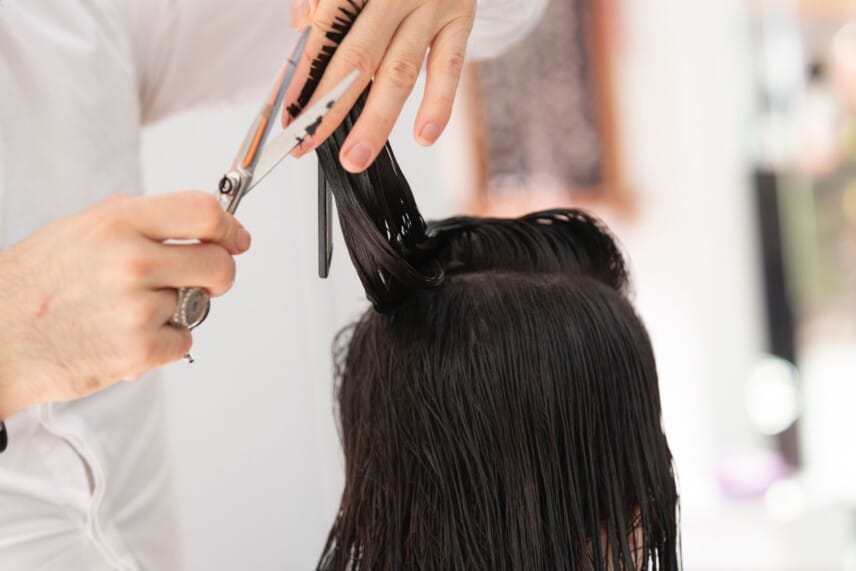
Small maintenance trims are going to be a part of getting back to your natural hair, but these clean-up cuts are not the same as the big chop. When you’re thinking about how to grow natural hair, small trims may seem counterintuitive, but don’t confuse getting your hair cut with cutting your hair.
Small, calculated trims will help with all of the following issues that most ladies have when transitioning back to their natural hair:
Avoiding awkward length — trimming helps keep your hair uniform and growing out in a way that still looks good. Since different parts of your hair grow at different lengths, trimming is the best way to keep hair uniform and growing properly.
Healthier roots and ends — getting a quick cut helps to promote healthy hair and encourages a stronger strand from root to tip. Not only does cutting snip away split ends and dead hair, but it also fosters new hair growth, so your natural look will come in even faster.
You don’t have to go full chop to transition to your healthy natural hair, but some cutting is required to get back to your natural state. Remember, you’re not stuck at home anymore, so you should really be going to see a stylist who can help your hair journey. StyleSeat can help you book a safe, in-person appointment in your area with just a couple clicks. Go see a pro who can really help you bring your natural hair back in a way that is easy, effective, and safe for your hair.
Go Natural Confidently!
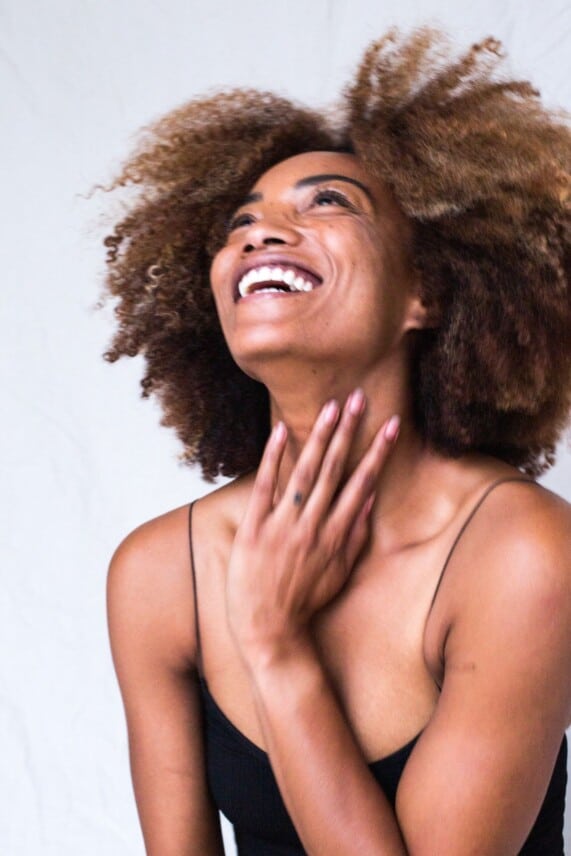
As long as you follow the general guidelines for how to go from relaxed hair to natural without cutting it listed above, you should have no problems transitioning. Just remember that transitioning back is a process, and aside from the additional effort and maintenance, it’s also going to take patience and time.
One of the best ways to stay on track is to keep seeing your usual StyleSeat professional. This is someone who knows your hair better than you do because they’ve been up close and personal with it on several occasions.
All the mirrors in the world can’t give you the insight that a trained hairstylist can when they’re looking at your roots, inspecting your scalp, and running their fingers through every strand of your hair. You have all the knowledge you need to go natural all by yourself, but why go it alone when there’s a StyleSeat Pro in your area waiting to make your transition easy and flawless?
